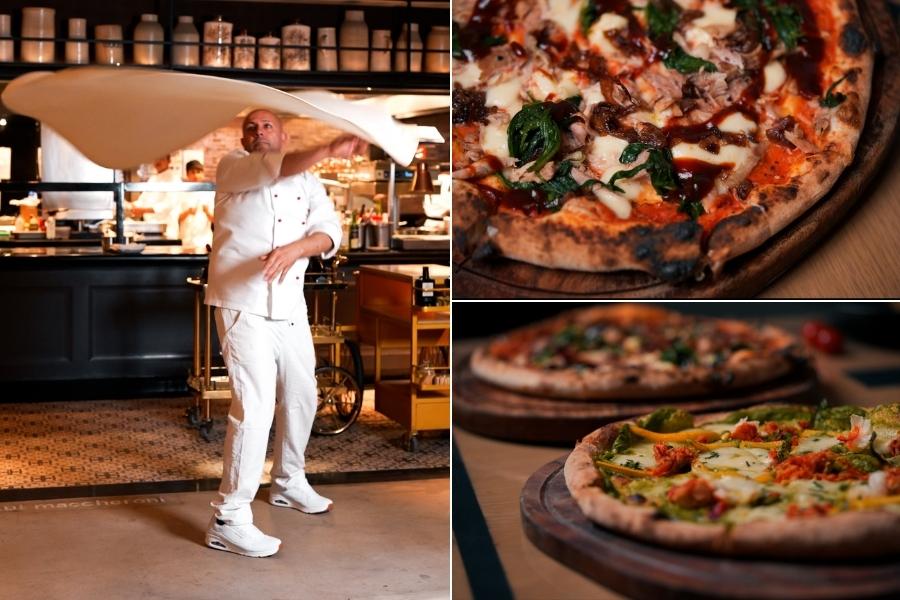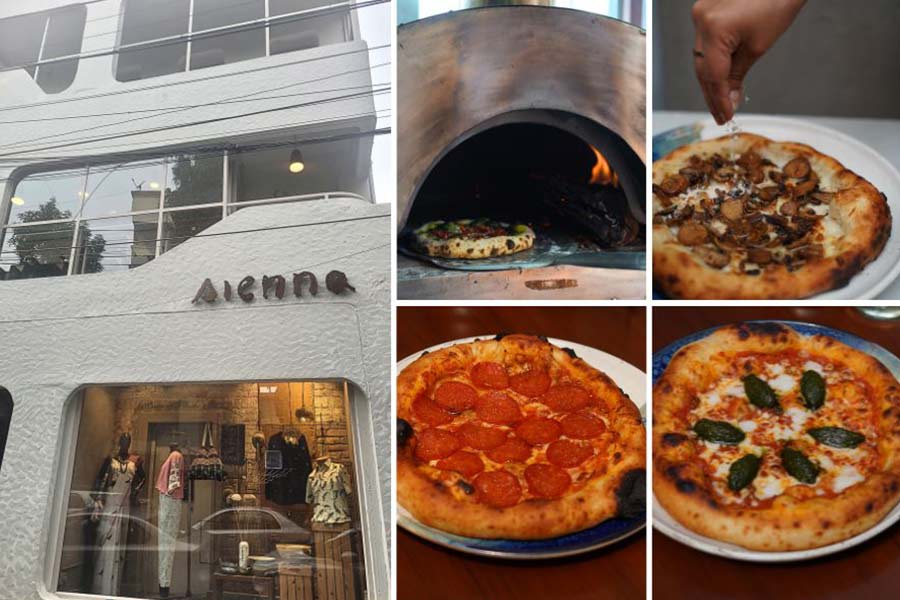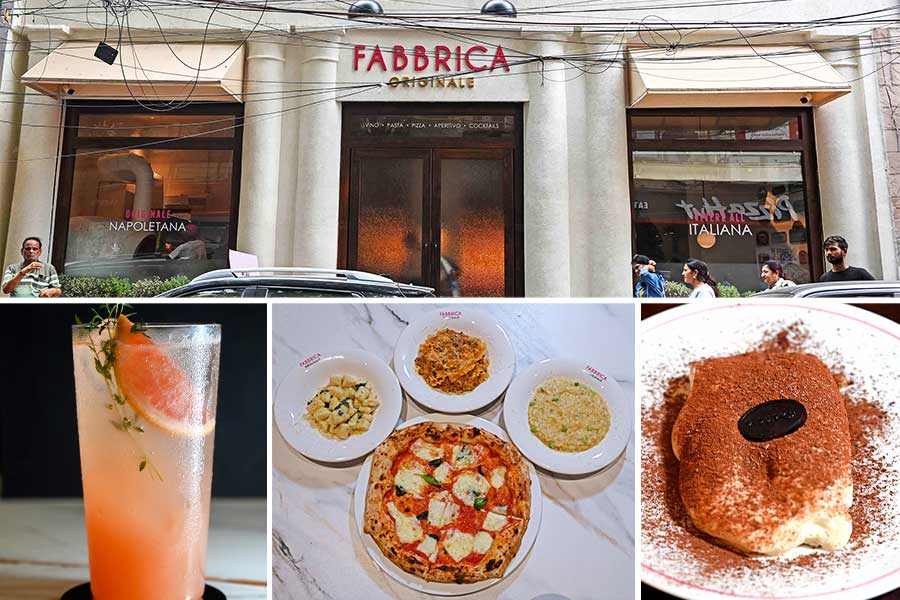It’s not every day that you get to witness a performance by the world champion of acrobatic pizza. Luckily, diners at Sorrento, the fine-dining Italian restaurant at the Shangri-La Eros New Delhi, had the opportunity to witness Sicilian chef Pasqualino Barbasso perform his world-famous gravity-defying pizza stunts and entertaining performances during an exclusive five-day pop-up from 19 to 23 March, 2025.
Chef Barbasso began his career in his family’s Pizzeria, Il Falco Azzuro, in Cammarata, in the Sicilian province of Agrigento, where he still works when he’s not travelling. Later, he trained formally in pizza making. In 1998, he won Sicily’s Acrobatic Pizza championship. By 2001, he was the World Champion. Since then, the two-time Pizza Acrobatics World Champion has made dozens of appearances in Italian restaurants and pizzerias around the world. But what exactly is pizza acrobatics? Chef Barbasso spills the beans in this exclusive for My Kolkata.
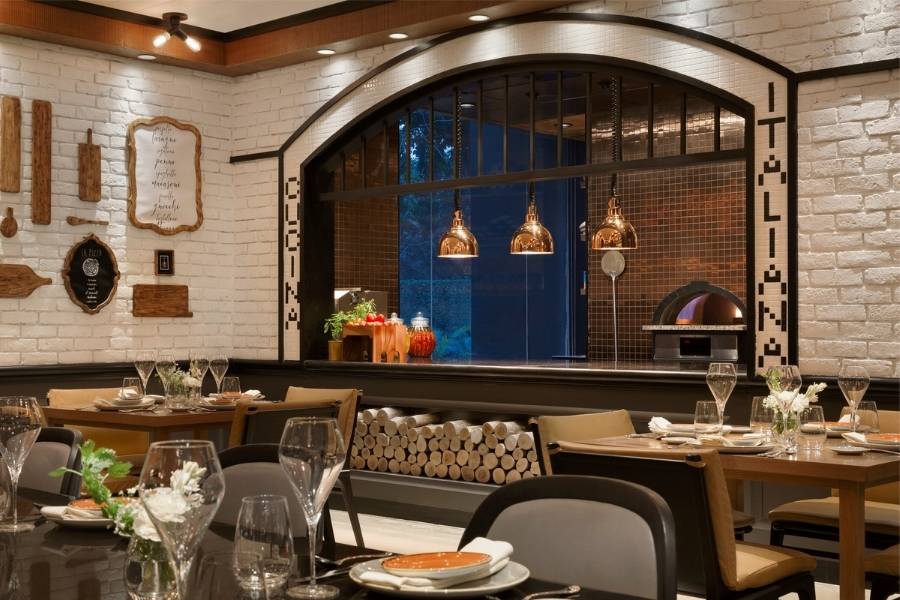
Sorrento, the fine-dining Italian restaurant at the Shangri-La Eros New Delhi
My Kolkata: How did acrobatic pizza making come about? What is the concept all about?
Pasqualino Barbasso: Acrobatic pizza making evolved as a natural extension of the artistry involved in traditional pizza preparation. It transforms a culinary technique into a visual performance. For me, this journey began in my family's pizzeria, Il Falco Azzuro, in Sicily, where I discovered that pizza-making could be both delicious and spectacular. The concept celebrates the elasticity and versatility of pizza dough, showcasing our mastery of the craft through spinning, tossing, and manipulating the dough in gravity-defying manoeuvres. What started as playful experimentation led me to compete professionally, eventually winning Sicily’s Acrobatic Pizza Championship in 1998 and the World Championship in 2001. Now, I travel globally, demonstrating that Italian pizza tradition can be both an art form for the palate and for the eyes.
What pizzas did you offer at the Shangri-La pop-up?
The menu I brought to Sorrento at Shangri-La Eros New Delhi reflects Italy's diverse culinary landscape. Guests experienced the King Sea, which pairs premium smoked salmon with pistachio pesto and a luscious parmesan fondue. The Bolero showcased Italy's finest ingredients – creamy burrata, delicate bresaola, and a sophisticated merlot reduction that elevates this pizza to extraordinary heights. For those seeking unique flavour combinations, there was the Walnuts pizza featuring a rich walnut cream, pungent gorgonzola, and fresh rocket leaves. The Calabrese highlighted parmesan cream for those who appreciate bold flavours, while the Old West offered slow-cooked pulled chicken, caramelised onions, and BBQ sauce – proving that exceptional technique can honour tradition while embracing global influences.

The expertise required for acrobatic pizza-making reflects years of dedication to understanding dough behaviour, temperature control, and ingredient combinations, says the chef
Does acrobatic pizza taste different or better than regular pizza?
The acrobatics are a performance, but the real magic happens in the flavour. The spinning and tossing actually improve the texture of the dough by helping it develop evenly and incorporate air – giving it that perfect balance between crisp and chewy. But more importantly, the expertise required for acrobatic pizza making reflects years of dedication to understanding dough behaviour, temperature control, and ingredient combinations. This same expertise translates directly to flavour mastery. So, while the show captivates your eyes, I ensure the taste captivates your palate with the same level of excellence. Each pizza served at Sorrento during this showcase carried the precision and passion of two decades of culinary exploration.
What tips or tricks can you suggest for becoming a top-level acrobatic pizza chef?
Mastering acrobatic pizza requires patience above all else. Begin by understanding your dough intimately – its elasticity, consistency, and how it responds to different temperatures and handling techniques. Start with simple tosses and gradually build complexity as your confidence grows. Balance is essential – both physically and in how you distribute the dough. Practice relentlessly, as I did when preparing for competitions. Most importantly, remember that spectacular performance means nothing without exceptional flavour. The greatest acrobatic pizza chefs never sacrifice taste for showmanship. My journey from our family pizzeria to World Champion took years of dedicated practice, and I continue learning with every performance. True mastery comes from respecting tradition while finding your unique expression.
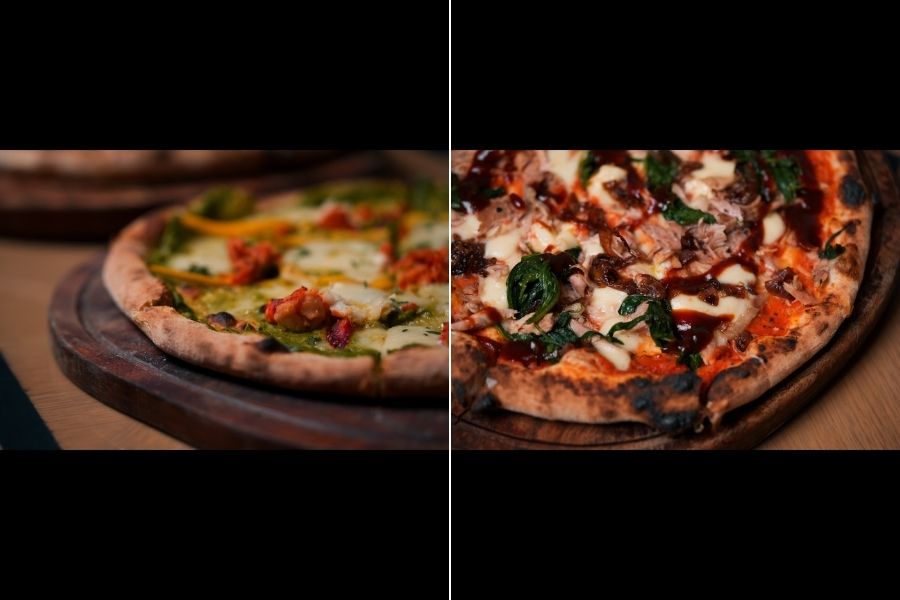
‘Each pizza served at Sorrento during this showcase carried the precision and passion of two decades of culinary exploration’
What are some of your most popular and interesting pizza flavours?
Throughout my career, I've found that the most beloved creations strike a balance between innovation and respect for tradition. The Bolero has become a signature, with its harmonious combination of creamy burrata, delicate bresaola, and sophisticated merlot reduction that adds depth and complexity. The Walnuts pizza offers an unexpected flavour profile that continues to surprise and delight guests – the walnut cream creates a rich base that perfectly complements the sharpness of gorgonzola and the peppery freshness of rocket leaves. The King Sea represents my Mediterranean heritage, where the smokiness of premium salmon finds perfect counterpoints in pistachio pesto and parmesan fondue. What makes these pizzas special isn't just unusual ingredient combinations but understanding how flavours interact and transform during the baking process.
Is this your first trip to India? Any Indian dishes you love or are looking forward to trying?
During my travels as a culinary ambassador, I’ve had the privilege of visiting India around 10 times, and each visit deepens my appreciation for this country’s extraordinary culinary heritage. The complexity of spices and the regional diversity of Indian cuisine fascinate me — there are notable parallels to the way Italian food varies across regions. I’m particularly drawn to tandoor-cooked dishes, as there’s a clear kinship between tandoor cooking and pizza making; both celebrate the transformation that occurs when exceptional ingredients meet intense heat. On this visit to Delhi, I’m looking forward to exploring more street food traditions, while also experiencing the diverse flavours of Asian fare that complement Indian cuisine. The vibrancy and boldness of these flavours offer endless learning opportunities for any chef passionate about taste.
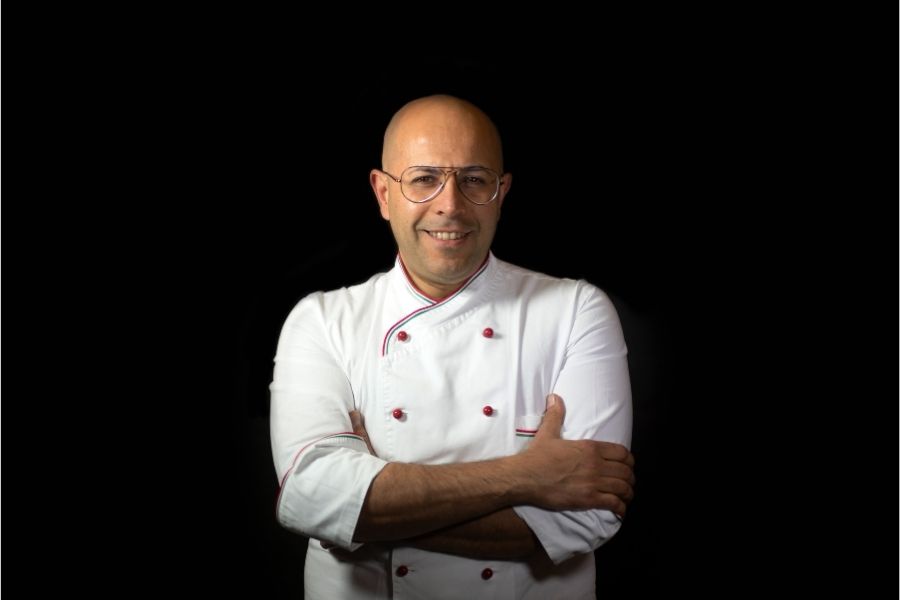
‘I’ve had the privilege of visiting India around 10 times, and each visit deepens my appreciation for this country’s extraordinary culinary heritage’
When you’re not eating pizza, what do you like to eat?
Despite traveling the world as a pizza ambassador, my palate remains deeply connected to my Sicilian roots. When I’m home in Cammarata, I naturally gravitate toward the Mediterranean diet that shaped my understanding of flavour—fresh seafood simply prepared to highlight its natural qualities, seasonal vegetables dressed with quality olive oil, and the rustic pasta dishes that have sustained generations of Sicilians. I have a particular fondness for arancini, those perfectly crisp rice balls with molten centres. While traveling, I make it a point to explore local cuisines authentically, believing that understanding diverse food traditions only enriches my own craft. Food is ultimately about connection, and whether I’m enjoying pizza or something entirely different, what matters most is sharing the experience with others. In addition to Italian cuisine, I also appreciate the vibrant flavours of Asian fare, especially Thai, Malaysian, and Indian tandoori dishes.
It is said that Italians are very particular about how pizza should be eaten. Are you a pizza purist too? Is it sacrilege to put ketchup on your pizza?
While there's truth to Italians being passionate about culinary traditions, I believe enjoyment should ultimately guide how we eat. That said, certain combinations do honour the craft more than others. Pizza with ketchup creates a flavour imbalance that overwhelms the carefully developed tastes in a properly made pizza – the acidity and sweetness mask rather than enhance. My approach is less about rigid rules and more about appreciation. I encourage people to first experience pizza as traditionally intended – appreciating the balance of a well-developed dough, quality ingredients, and proper cooking technique. After understanding these fundamentals, personal preferences can guide your experience. The most important aspect isn't following strict rules but developing a genuine appreciation for quality and craftsmanship. Great pizza needs no additional condiments, as each element already exists in perfect harmony.
